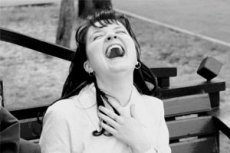Hyperbulia
Last reviewed: 23.04.2024

All iLive content is medically reviewed or fact checked to ensure as much factual accuracy as possible.
We have strict sourcing guidelines and only link to reputable media sites, academic research institutions and, whenever possible, medically peer reviewed studies. Note that the numbers in parentheses ([1], [2], etc.) are clickable links to these studies.
If you feel that any of our content is inaccurate, out-of-date, or otherwise questionable, please select it and press Ctrl + Enter.

Hyperbulism is a strong-willed disorder, in which an inadequate increase in various desires occurs, as well as attempts to perform often unproductive activities. In general, this pathology develops under manic conditions, and is also combined with other mental disorders (attention and thinking).
Causes of the hyperbolic
Hyperbulism is an integral part of manic syndrome, and in addition it can be observed with various psychopathies, as well as acquired dementia. In addition, the causes of the disease can be drug addiction and alcoholism.
In children, the development of a hyperborea is usually associated with the consequences of obtaining an early organic trauma to the central nervous system - the MMD syndrome. Also, this condition is described in schizophrenic states, epilepsy, chronic epidemic form of encephalitis, neurotic disorders, oligophrenia. In addition, he can be part of the so-called. Cramer-Polnova syndrome (in this case there is a combination with regular violent movements, as well as gradually progressive dementia).
Risk factors
Symptoms of the hyperbolic
At a hyperbolia at the patient the inadequate behavior which at a combination with paranojalnymi ideas is expressed in excessive persistence, activity, persistence at upholding of own convictions and sights is observed. In case of obstacles or reluctance of other people to separate these ideas (often quite absurd) or recognize them, the activity of defending their position is only intensified.
The activation of symptoms of hypermobility often occurs due to alcohol intoxication or in conditions when the mood is painfully increased. A characteristic feature of hyperbulia is also low fatigue in patients.
Diagnostics of the hyperbolic
In the diagnosis of non-verbal behavior, as well as volitional activity, methods of reflexology and ethology are mainly used.
The ethical way is to record the so-called. The programs through the following communication channels - social, visual and tactile, and in addition audial and olfactory.
- Objectivization of the visual channel is performed by recording the dynamics of manipulations, poses, and gestures and facial expressions of the patient;
- audial - audio and sonographic method;
- social - on connecting systems between members of a social group or society (for example, through exchange or donation, as well as by manifestations of dominance or aggressiveness);
- olfactory - study of pheromones;
- tactile - on the allocation of touch zones to yourself and others, as well as the frequency of touch.
All channels can be recorded simultaneously, or be recorded separately.
Who to contact?
Treatment of the hyperbolic
Treatment is carried out in a complex way - medicinal preparations, as well as cognitive psychotherapy. Medicines should be selected only by a doctor, proceed from the patient's condition. For example, with excessive activity and excitement, which are noted in the case of hyperbolia, sedative drugs are prescribed.
The disease is stopped with the help of injections of antipsychotics (haloperidol preparations in the dose of 1-2 ml and Tizertsin or Aminazin in a dosage of no more than 2-4 ml, which are injected / m), simultaneously with the intake of neuroleptic tablets (the same Aminazine in a dosage of 50-100 mg ). Injections, if necessary, can be repeated after 1-2 hours. Effective sedative is also Azaleptin (Leponex), which should be taken orally in a dosage of a maximum of 100-400 mg / day.
With manic syndrome, maintenance therapy is carried out with the help of drugs Lithium (the drug effect occurs on the 8-10th day of use).
Cognitive treatment involves eliminating the cause of the disease. For a complete cure, an average of about 1 year of treatment is required with the help of psychological correction and medications. Then the patient should be under constant supervision of the attending physician in order to prevent the repeated development of pathology.
In case of a serious condition, the patient may be hospitalized - this is necessary in order to control it, preventing possible risky behavior.


 [
[